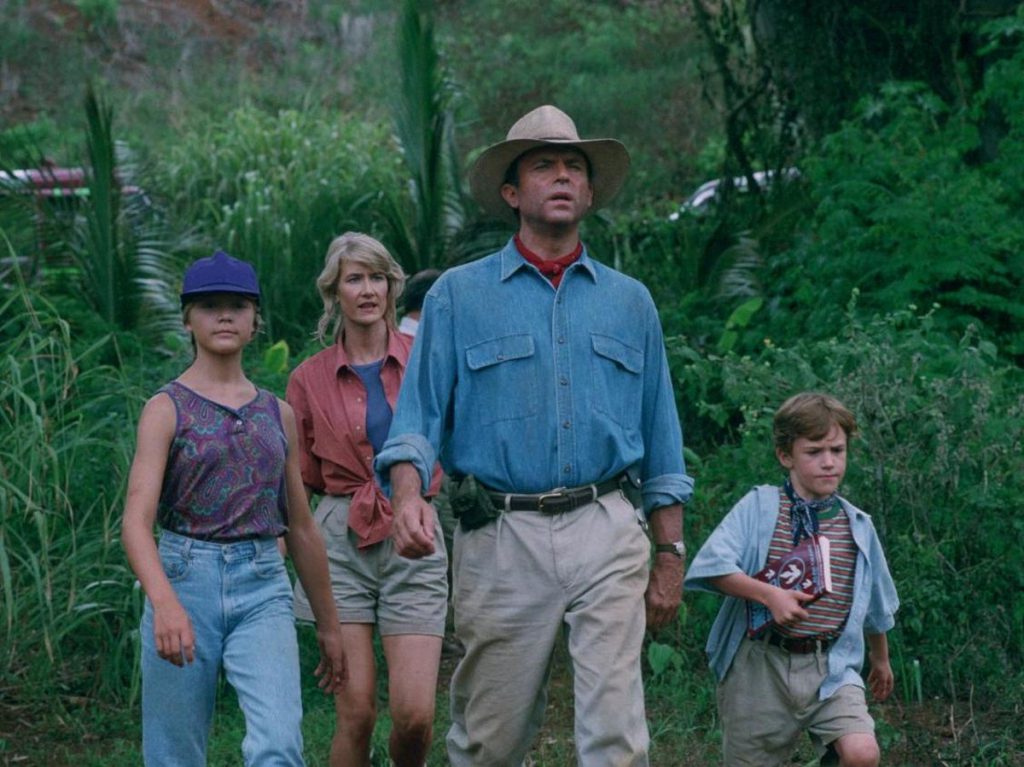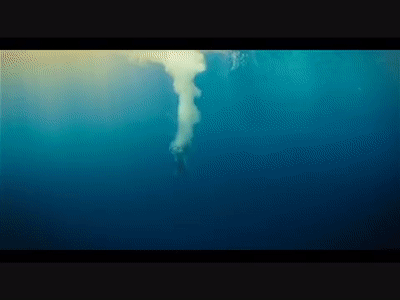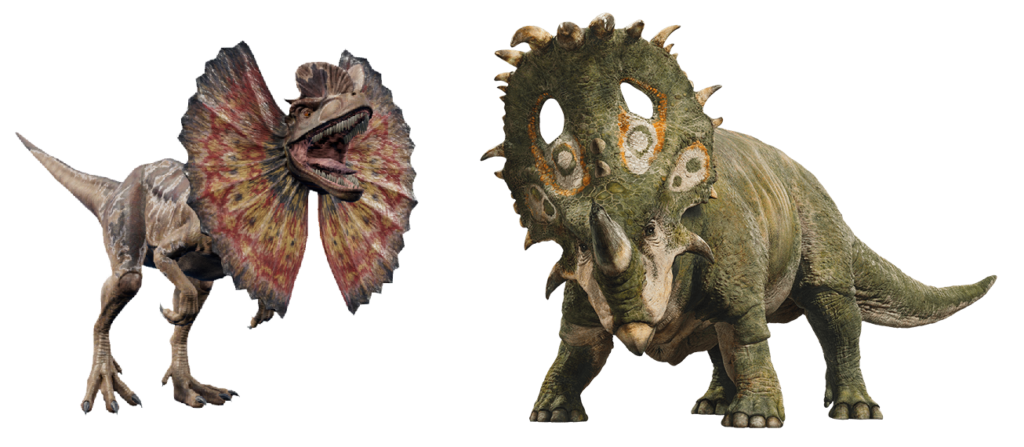How to Make Jurassic Park Work Again
September 20, 2021

1993’s Jurassic Park, based on the 1989 science fiction horror novel by Michael Crichton generally follows the plot, but makes a number of little changes in adaptation. The book contains a lot of dry science which is fascinating to read, but would probably drag on screen. Some of the major action scenes are cut or reengineered to work better with the special effects available at the time. They also have a slightly different politique; the movie is much more sympathetic to park owner John Hammond (Sir Richard Attenborough) than the novel is.
More critically, the novel’s presentation of its own premise is a much slower burn. It’s a long build-up of mystery and politics before you get to the dinosaurs. The movie pretty much cuts to the chase.
Jurassic Park spawned four (soon to be five) sequels. One is based very loosely on the novel’s sequel and the others are original stories. I don’t think it’s a controversial opinion to say that none of them are beloved classics quite the way the original is. So what does Jurassic Park have that its sequels don’t? And more importantly, what can be done so that future movies can make it work?
The Mystery
It’s hard to imagine when the franchise is so well-known, but the premise of the story was treated as a mystery in the book. Just what the heck are they up to on that island?
John Hammond is the head of InGen, a company making huge advances in genetic engineering for fun and profit. They’ve just bought an island off the coast of Costa Rica, far from the interference of US law, and nobody knows what they’re up to out there, but whatever it is, construction workers keep dying in poorly documented accidents, with bizarre injuries that look more like a tiger attack than a forklift. Additionally, Hammond has taken a personal interest in paleontology, a branch of science which has nothing to do with genetic engineering, funding digs and research in exchange for expertise on dinosaurs. InGen is also buying up all the amber it can get its hands on and has acquired exclusive patent rights to a formula for artificial eggshell. A little girl in Costa Rica was bitten by some kind of lizard nobody can identify. Journalists, scientists, the government, and competitors are all stumped. What is going on??? ?????
What’s going on is they’re cloning dinosaurs to make a zoo. And if you’ve seen the movie, you already knew that. But because it’s a good story, knowing that doesn’t spoil the experience one bit. It’s intriguing, it’s suspenseful, and it teaches you the science jargon, the political landscape, and the business history in which this story takes place. After the secret is out, the book then spends a long time on dry, dry science, (which I love) explaining how it all works. It a fascinating read, and terrifyingly believable.
The movie glosses over a lot of this. A construction worker gets mauled by an unseen something, John Hammond plays coy for one whole scene and then surprise! It’s dinosaurs!
The movie is doing its own thing. It doesn’t suffer from this loss, but if you’re writing a third, fourth, seventh sequel in the franchise, this is an untapped well in the source material, that none of the other entries in the franchise ever return to. A movie where journalists and investigators follow clues and try to figure out what InGen is up to- where the dinosaurs themselves only appear at the midpoint of the movie? I’d watch the hell outta that.
You know the answer is dinosaurs because obviously it’s a Jurassic Park movie, and yet there’s still something satisfying about watching the characters on screen not figure it out because why in the world would they guess that??
A Morality Play
There’s a scene in Jurassic World which turns my stomach every time. Claire (Bryce Dallas Howard) has pawned the kids off on her assistant, Zara. The kids are bummed out because their aunt isn’t spending any real time with them, and I guess they sort of resent Zara, even though she’s doing her best and it’s clearly not her fault. And they sneak away from her and go get into trouble during the chaos of the Indominous Rex’s escape. In the scene where the Pterosaurs get loose and terrorize the main resort strip, Zara alone among the crowd gets picked up by a Pterosaur and carried off screaming. It tosses her around a little, then another pterosaur tries to snatch her away, and finally they drop her in the Mosasaurus tank, where she tries feebly to swim away. Before she can make any distance, one scoops her up again and starts to fly off, and she resumed incomprehensible, hysterical screaming when the Mosasaurus swallows her and the Pteranodon both whole and disappears back into the water. … Awesome?

In the opening Scene of Jurassic Park, an unnamed construction worker is pulled into a transport container, as the foreman shouts “Shoot her!” It’s an industrial accident and serves to display the inherent danger and recklessness of the park’s construction. Later, sleezy lawyer Donald Gennaro is eaten by the T-rex when he abandons the kids and runs away. Dennis Nedry gets what’s coming to him when he steals corporate secrets for money, and then is rude to a dinosaur. Robert Muldoon, who’s hunted and tamed all the most dangerous game in the world, meets his match when he fails to outsmart the velociraptors. Ray Arnold’s remains are found in a moment of horror.
I’d like to divide these deaths into three categories: Horror – Arnold and the construction worker’s deaths are the senseless result of Hammond and InGen’s folly; Comeuppance – Nedry and Gennaro had it coming. They make themselves unlikable to the audience and you root for the dinosaur; and Character-driven – Muldoon finally meeting an animal that can kill him better than he can kill it is the resolution of his character arc.
Which of these can be attributed to the death of Zara in Jurassic World? She didn’t do anything wrong or evil, so we’re not really rooting for her to get what’s coming. She’s got like two lines and no character arc to speak of. There’s no catharsis or realisation of a tragic flaw as she screams and screams, never accepting it, for what feels like an hour. What about the horror angle? It’s no accident that the most senseless deaths are the ones which happen off-screen or out of frame. But Jurassic World makes you sit through all of it. And it’s not really framed as scary. It’s framed as… action? Like is it supposed to be cool? It’s not really a horror movie like the original explicitly is, it’s just a generic brand-name action franchise. It’s got more in common with Transformers frankly. If the scene was supposed to be cool, then the movie failed to make her dislikable enough for you to root for the Mosasaurus. More likely, I think, is that the movie thinks you don’t care or connect with side characters. That any deaths that aren’t a main character are just action. Park employees get eaten, but they aren’t Chris Pratt, so who cares? The squad of ranger/hunter guys get killed, but they aren’t Chris Pratt, so who cares. Park owner Simon Masrani dies in a helicopter explosion, (wasn’t this movie supposed to be about dinosaurs?) in the culmination of his own hubris and recklessness when it comes to managing the park. But the pilot seated next to him? That’s not a person, that’s just some guy, so who cares? Every death in Jurassic Park meant something. But these random nobodies bite it by the dozens and neither the main characters nor the audience are made to care.
Science

As a great theme song once said, “science rules!” Jurassic Park was revolutionary in its depiction of dinosaurs. The sluggish, upright, T-rex of King Kong lingered in pop culture long after paleontologists had corrected it, but Michael Crichton and Steven Spielberg were here to put that straight. Both novel and film lean heavy on the relationship of dinosaurs to birds, on the fact that they were fast and intelligent. The book especially takes care and attention to portray and refer to the dinosaurs as animals, not monsters. A lot of new discoveries have been made since the original movie, but 1993’s Jurassic Park gave audiences the best, most up-to-date, scientifically accurate dinosaurs 1993 had to offer. 2015’s Jurassic World on the other hand, gave audiences the best, most up-to-date, scientifically accurate dinosaurs 1993 had to offer.
Though the original Jurassic Park pre-dates broad acceptance that most dinosaurs had feathers, their close link to birds was front and center in their presentation in both book and movie. Various different dinosaurs are highlighted for the way they move in flocks, look sideways with one eye or the other, and bob their heads as they walk. By the time of Jurassic Park III, that the velociraptor had feathers was well known, and the movie sort of pays homage to this by giving the male raptors these little spines on their heads, but it’s hardly a full commitment.
Jurassic World has an opportunity, with a new cast, new park, new decade to catch the series up. But they squander it. Yes, there’s a throwaway line explaining that in-universe, the dinosaurs of Jurassic World are cynically engineered to be crowd-pleasing rather than historically accurate, (the movie likes to tell on itself like this) but a canonical acknowledgement that they’re getting dinosaurs wrong is not the same as getting them right, and the series goes on to be more interested in movie monsters than in living animals.
That’s not to say the original and even the novel didn’t take liberties with the science. Michael Crichton kicked himself when he exaggerated the velociraptors in the book to make them bigger and scarier, and then Utahraptor was discovered only a few years later. But that case is an outlier. Most liberties with the real science in the book are taken to fill in gaps, rather than change things.
For example, Dr. Grant in the movie famously warns the others to keep still: the T-rex can’t see them if they hold perfectly still because its vision is based on movement. If you’re thinking it’s a bit of a stretch that he would know anything about the animal’s vision based on fossils, that’s because it is. In the book, Dr. Grant only finds this out in the moment. Paralyzed in fear during the T-rex attack, he realises that it can’t see him, and advises everyone else to hold still. Similarly, that scene in the beginning, where he’s telling that snotty kid how velociraptors hunt. It’s inspired by a scene in the book, but in the book it’s not that he knows about the raptors’ hunting habits from studying fossils. He has no idea how they hunt until he sees them in action in the park. The key difference in both of these examples is that Grant only knows about dinosaurs in theory, as you and I might know them from palaeontology. The whole point of the series is the fantasy of seeing live dinosaurs in action, and so the things it makes up out of whole cloth are the things you could only know by seeing the animals in the flesh.
It goes even further. The Dilophosaurus in the movie has a frill like a frilled lizard, and spits poison. Neither of these traits has any basis in real-world science, but critically, they occupy a space that is vacant. Would you know from a fossil that a cobra was venomous? Or that a camel could spit? If all you had was the bones, would you ever imagine an elephant’s trunk, or a lions’ mane? There are so many famous traits of real animals that we can’t learn from just their bones, and we are almost certainly missing out on hugely significant traits that don’t keep in the fossil record. Palaeontologists 100 million years in the future will never know that parrots could talk, or that pufferfish puffed, or that zebras had stripes. So, the invention of traits such as the T-rex’s vision or the Dilophosaur’s frill serves to enrich an otherwise shrink-wrapped design.
And then there’s the Sinoceratops. That’s the one in Jurassic World: Fallen Kingdom whose fenestrae are two big open holes in its skull. That makes a cool toy I guess. And that’s to say nothing of the completely made-up dinosaurs that are central to the new trilogy’s plots.
Jurassic Park in 2021
The novel opens with a long prologue detailing the state of the genetic engineering industry in 1989 (the year the book takes place.) It details the way that huge technological breakthroughs of the past were public spectacles. Scientists of the space age were publicly funded and turned their noses up at private industry. But the huge leaps and bounds in bioengineering have been done behind closed doors; “in secret, and in haste, and for profit.” Bioengineering could be curing cancer, but instead it’s being used to make people’s sweat smell better. Commercial frivolities that make money. That’s the culture in which a dinosaur safari sounds like a good idea. That culture of profit with no oversight or transparency is what leads to the incident on Isla Nublar.
The character deaths are different from book to movie, but by far the most significant is John Hammond. And it’s because that morality tale angle, where the people who get eaten deserve it. The movie’s version of Hammond is sort of an aloof Walt Disney. He just wants to bring joy and wonderment to children and adults alike, and in his hubris, he doesn’t realise how dangerous his masterpiece is until too late. Him accepting that the park was a mistake is the conclusion of his arc.
Hammond in the book is a mad scientist, arrogant businessman, and raving lunatic. He assembles a team of experts to judge the validity of the park (all a formality to get the lousy government off his back) and when they all tell him it’s too dangerous, he ignores them and puts everyone in danger. Even when his own grandchildren are lost on the island, possibly dead, he’s more concerned with how he’s going to salvage the Park than with getting them to safety. Never accepting anything and getting eaten by dinosaurs is the conclusion of his arc. The villain of the movie is hubris. (“Your scientists were so preoccupied with whether or not they could, they didn’t stop to think if they should.”) The villain of the book is Capitalism.
It’s 2021 now. Jeff Bezos and Elon Musk are going to space. More than four million people have died of Covid-19, yearly wildfires are just normal now depressingly, as is hitting new record heat every summer. And in that climate, the wealthiest and most powerful people in the world are putting their best scientists to work on personal vanity projects. No dinosaur clones yet, but here’s hoping.
A movie where a genius’ dream goes horribly wrong and he has to give up his life’s work was satisfying in 1993, but a movie where profit and greed lead to very predictable disaster is the movie I’m still waiting for in 2021. Frankly, that was the movie I was waiting for in 2015 when Jurassic World came out. The one about the crazy rich guy who won’t listen to experts and pushes his vanity project through to the detriment of everyone else, and no it’s not charming. Jurassic World fails to be that movie. Jurassic World: Fallen Kingdom fails to be that movie. And I don’t have high hopes that the upcoming Jurassic World: Dominion has much interest in being that movie either.
So where do we go from here?
I know it seems like I’m just ranting about everything that is wrong with every Jurassic Park movie except the first one. But no, I don’t think Just Do the First One Again But with Feathers is the answer here. I even kind of liked Fallen Kingdom after I’d given up on the movie I thought it should be, and just let it be the movie it is.
But if the series ever wants to put out an enduring classic again, it needs to find out what that secret sauce was that made the original click. And I think the secret is in the book. Plenty of what was dropped in adaptation was really interesting, and going back to that well would yield a lot off good material.
Imagine a Jurassic Park movie with the political element, where billionaires use their resources to clone dinosaurs for fun instead of solving the world’s problems, and where the dissent of countless experts can’t dissuade them from making one dangerous decision after another; the mystery element, where journalists, law enforcement, competitors, and the public scramble to figure out just what the hell is going on on that island; the science element, where these animals are vivid and terrifying because they were real; and the mortality element, where each death serves the story, and you don’t have to sit through the full duration an innocent person’s snotty, gruesome, traumatic death because that’s not fun.
I don’t think Jurassic World: Dominion is going to be that movie, but maybe some day.
If you’re interested in learning more about the difference between the original book and movie, check out this video by CineFix: Jurassic Park – What’s the Difference
For insight into how the original film differs from the sequels on a technical level, check out this video by Films&Stuff: Scale Framing – Why Jurassic Park Looks Better than its Sequels
By Andrew Robertson